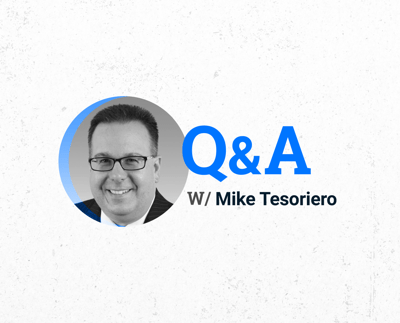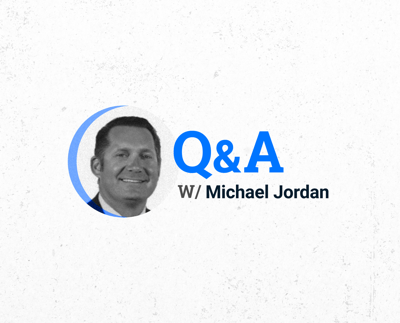Jeff Murphy is the managing director and portfolio manager of the Ullico Infrastructure Fund (UIF). Prior to joining Ullico, Murphy was a senior member of Deutsche Bank’s alternatives investment group. He has more than 25 years of experience in infrastructure development, finance, and principal ownership. In a recent Q&A, Murphy spoke about trends affecting institutional investors in the infrastructure space.
As an institutional investor, what trends do you see in the infrastructure space?
In the United States, infrastructure in established metropolitan areas needs a lot of work. It’s still in disrepair and needs replacement or refurbishment. And then in areas of the country where we’ve seen higher inflows of population, they haven’t necessarily kept pace with the need to build new infrastructure.
Look at places like Phoenix or Austin, where there has been significant growth in the last 20 years. Those places have congested roads, insufficient water infrastructure, and a backlog of infrastructure investment for the delivery of energy and data.
What about the legislation passed by Congress to boost infrastructure? How has it had an impact?
Of the two recent bipartisan infrastructure bills that were passed, the first one is what I would call a typical infrastructure bill—to build or repair infrastructure assets under the purview of state and municipal authorities. That money is being used across the country to clear a backlog of infrastructure improvements and these projects are being managed and funded by those state and municipal authorities.
But that legislation is clearing up work that’s been in their pipeline, enabling them to think about projects that are more appropriate for private funding and public private partnership structures. As a result, we’re starting to see a bit more activity at the local level to engage and think about how they could leverage private capital.
The second bill that was passed, the so-called Inflation Reduction Act (“IRA”), deals with making investments to combat climate change and achieve the decarbonization goals of the United States. The IRA enables continued investment in things as simple as renewable electricity generation but also other transition investments necessary to bridge the gap between where we are now and where we want to be in the future.
What do you mean by transition investment?
Five years ago, no one used the phrase “energy transition.” Now, it’s a type of investment. Essentially, if you’re a state where maybe 10% of your electricity is generated by renewables but you want it to go to 40% or 50% or whatever that number is, that’s going to take you a long period of time to achieve. In between, you’re going to have to make infrastructure investments in things like your transmission network as well as in power sources that are available when renewable assets are intermittent.
We have an investment in our portfolio called Southland, which fits this concept for the State of California.
How is Southland an example of an “energy transition” investment?
In the case of Southland, most of the assets are in California. California built out its solar network very quickly. They retired traditional carbon-based power plants, alongside nuclear energy sources, and replaced them with solar generation.
That put them in a challenging situation. In the evening hours, they would have demand spikes for electricity that coincided with the sun setting. In addition, the electrons generated by solar energy tend to destabilize the grid. This collectively resulted in power outages and issues with existing infrastructure. They needed to make investments in traditional power to stabilize their grid and reliably deliver power to people’s homes and businesses. Our Southland investment has two small natural gas power plants in addition to a battery storage unit. These assets are dispatched by California utilities under 20-year contracts to solve these transition issues.
Battery storage is a developing product. It will become an important way to store cheap renewable power, but it’s still not quite there. Regardless, California had to make these investments to keep the grid running and also to service demand spikes until they can figure out other ways to deal with them.
That’s going to be a trend across the United States. Every state has a different view on how quickly they want to decarbonize. Some very quickly, some very slowly, but they’ll need to make these kinds of transition investments in pace with their plans.
What else should pension fund investors know about the opportunities and obstacles around “energy transition?”
A part of the energy transition movement is that more transmission projects are needed. This occurs because in many cases where you have a good renewable resource, like wind or sun, you don’t have people. The projects are in the desert or other remote areas. These places tend to be sparsely populated.
For example, we have a project in Oregon where the best resources for renewables are in the high desert in the eastern part of the state where there’s little population. The greatest demand for power is in areas like Portland in the western part of Oregon. In this case, we are working with one of our existing partners to put a transmission line in the Columbia River. Rather than run poles and wires over a major mountain range and deal with significant right-of-way issues, we’re going to run a cable in the river, and it’s going to move that renewable energy in the east and deliver it to the densely populated areas of the west.
It’s projects like this that we’re going to see more and more of in the next decade because if we want to decarbonize, you won’t be able to do it without investing in new transmission. The same would apply to offshore wind development on the eastern seaboard.
Besides energy-related investments, what other trends in infrastructure do you think are notable?
On the transportation side, I think the biggest trend we’ll see is working to relieve congestion on roads. There will be technological ways to relieve congestion or get more capacity from existing roads, but there will also be other approaches.
We see a number of projects being vetted across the country to use private funding to relive congestion. Often, this comes in the form of expanding a road beyond its current capacity and reserving a portion for congestion tolling. The existing capacity of the road remains free while the new capacity has a dynamic toll that responds to demand for the road at any given time.
I think what we’re doing at JFK Airport Terminal One in New York City is replicable at other airports around the country as well. Many of our airports and terminals have fallen behind international standards. These are often the gateways for people visiting the United States but also essential assets to our overall economy. I think we’ll continue to see private funding, and concession models of airport terminals.
Finally, there are all kinds of supply chain issues that surfaced during COVID that need to be addressed. Because of these issues and legislation like the IRA, we are starting to see manufacturing return to the United States. This trend is going to require new infrastructure and improvements in the transportation supply chain.
As a result of all this, I think we are entering a vintage period for infrastructure investment and improvement. The combination of government and private capital coupled with innovative procurement and operating models are likely to usher in a renaissance for American infrastructure.
This conversation has been edited and condensed for clarity.



